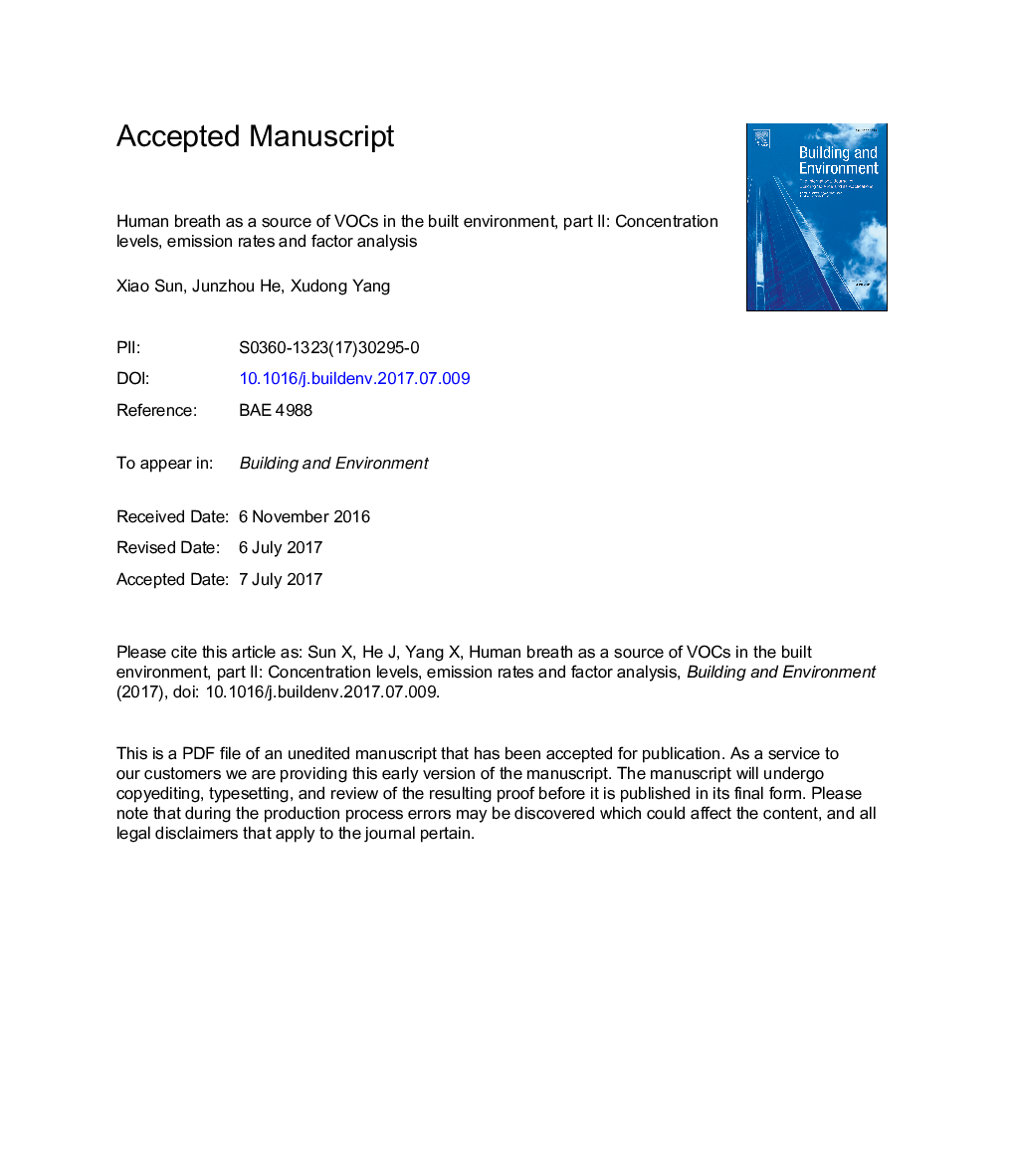| Article ID | Journal | Published Year | Pages | File Type |
|---|---|---|---|---|
| 4917271 | Building and Environment | 2017 | 28 Pages |
Abstract
This study aimed to understand the volatile organic compound (VOC) emission levels and possible influencing factors in human exhaled breath via quantitative analysis. Using the experimental method developed previously, breath samples of 117 healthy human subjects were collected and analyzed. Concentration levels of 60 VOCs with the highest detection rates (DRs) were analyzed, and statistical results of emission rates of these VOCs are provided in a table for easy reference. In general, endogenous VOCs were found to have higher concentrations than exogenous VOCs. Furthermore, concentrations and emission rates of these VOCs were statistically compared for gender, different age groups, and smoking exposure types. The results of the univariate analysis showed that these three factors may yield a significant difference in concentration and emission of some, but not all, VOCs. The regression model showed that, for most VOCs, active/passive smoking and being male or of older age were most likely associated with higher emission levels. Age was emphasized to be a significant factor influencing VOC emissions through exhaled air in this study.
Related Topics
Physical Sciences and Engineering
Energy
Renewable Energy, Sustainability and the Environment
Authors
Xiao Sun, Junzhou He, Xudong Yang,
